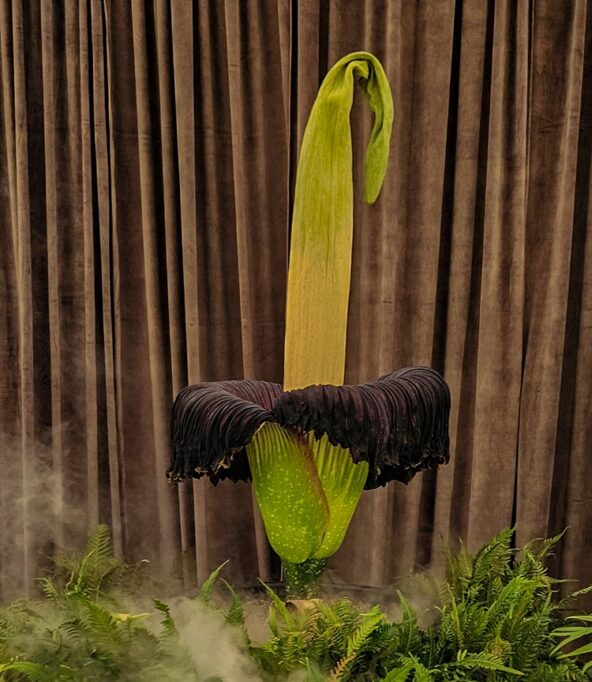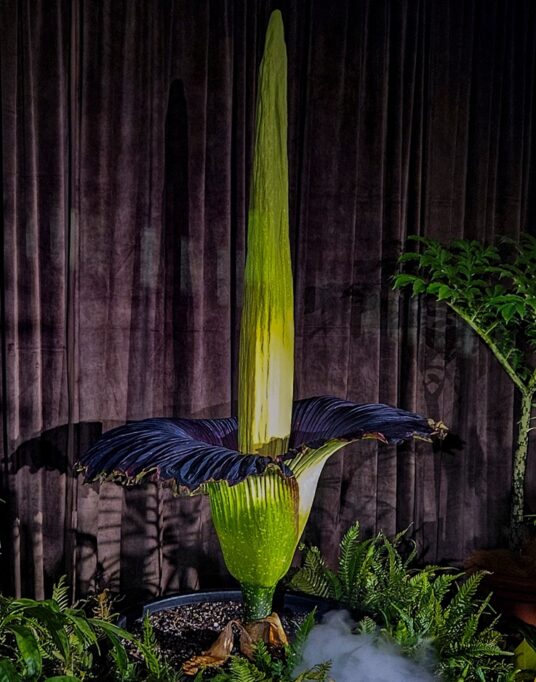Corpse Flower Draws Crowds After Blooming in Australia
CORPSE FLOWER – The rare and fascinating flower bloomed at the Royal Botanic Garden in Sydney, Australia, for the first time in 15 years.
The Corpse Flower (Amorphophallus titanum) is a rare plant native to the rainforests of Sumatra, Indonesia. It is famous for its enormous bloom and strong odor, often compared to the smell of rotting meat. This unique scent attracts insects like flies and beetles that assist with pollination. The Corpse Flower is one of the largest flowers in the world, reaching up to 10 feet in height and 5 feet in width. Its bloom cycle is highly unpredictable, with the first bloom taking 7 to 10 years and subsequent blooms occurring only every few years. The plant features a tall central structure called the spadix, surrounded by a petal-like spathe that is green on the outside and dark red or purple on the inside, mimicking the appearance and smell of decaying flesh.
The Corpse Flower is extremely rare due to its slow growth, specific environmental requirements, and the ongoing loss of its natural habitat caused by deforestation. The bloom lasts only 1 to 2 days before wilting, making each occurrence a unique and highly anticipated event. Despite its name, the Corpse Flower is not a single flower but a cluster of numerous small flowers. Its endangered status underscores the urgent need for conservation efforts to protect it and its natural environment.

Meanwhile, the rare and remarkable Corpse Flower recently bloomed at the Royal Botanic Garden in Sydney, Australia, for the first time in 15 years. This marks only its fifth bloom since 2006. Known for its strong odor resembling rotting meat, the flower earned its distinctive name from this unique feature.

Despite its unpleasant scent, the bloom remains a significant event, attracting both locals and tourists who eagerly wait in long lines to witness and experience this botanical marvel. The flower’s ability to captivate people, despite its notorious “fragrance,” highlights its unique allure.
